Last year I began to hear rumors of a chassis system that takes the ergonomics of an AR15 and lends them to a bolt action rifle. At first you may wonder why this would be a good idea. Some of us have worked with traditional stocks for a long time. The truth of the matter is the rifle stock has evolved over time to it's current form. From the original matchlock rifles to today's combat arms the stock continues to change to better fit the marksman. With this in mind I find the name of XLR Industries new chassis system very appropriate.
I spoke with Kyle Miller of XLR Industries at the 2011 SHOT show. While I was not able to handle the Chassis at the show, Kyle assured me that I would get to take a look at one soon. About a month after SHOT I was surprised by a package on my doorstep. After tearing into it like a kid at Christmas I was looking at the sexy black form of the XLR Evolution.
|
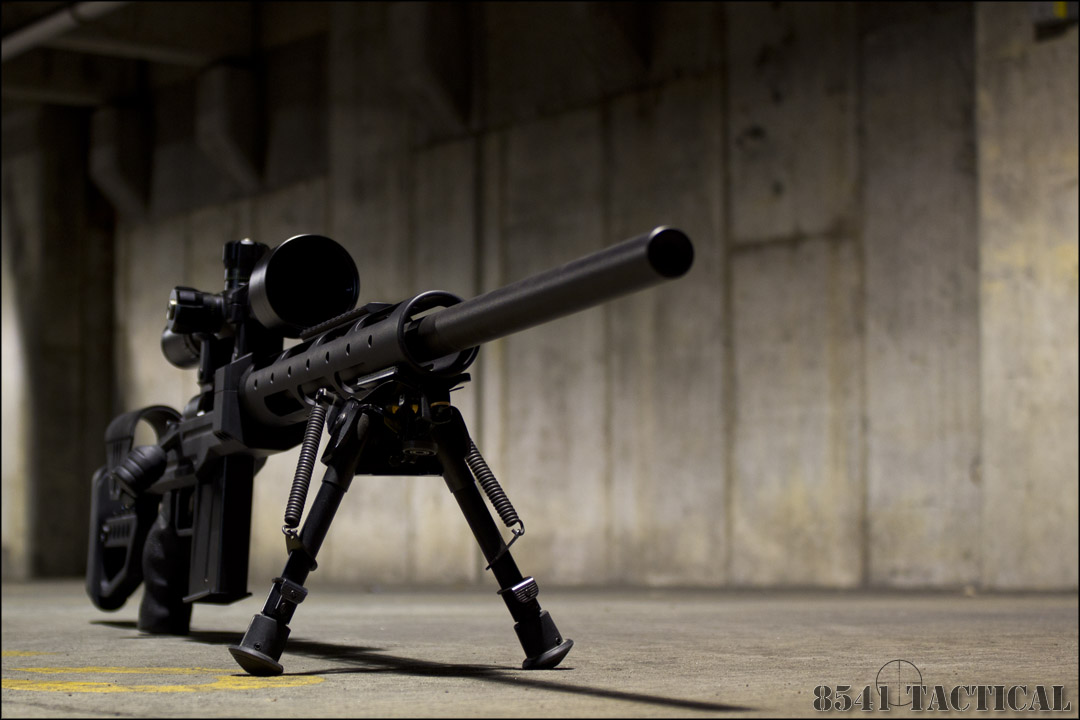 |
 |
Picking the Evolution Chassis up feels like you are handling an AR15. The angle of the pistol grip and the tube forend are greatly responsible for this. Additionally the magazine and stock are placed in similar locations. The chassis is designed to accept carbine type AR15 stocks.
Our model came with XLR Industries' own Tactical Buttstock. The Tactical Buttstock is fully adjustable for cheekpiece height, length of pull and cant. The Tactical Buttstock can also be ordered with a short piece of Picatinny Rail on the bottom to facilitate mounting a bipod. |
The machine work on the Evolution is excellent. The inlet on our model was cut precisely for the Remington 700. The trigger well is generous and should not pose a problem for most triggers. The recoil lug well leaves some extra room (0.31") for those shooters running oversized lugs.
There is a clearance groove down the center to keep the action from bottoming out. The inlet is a "U" shape, conforming to the bottom of the action. This is in contrast to the "V" block shape that many chassis systems use. |
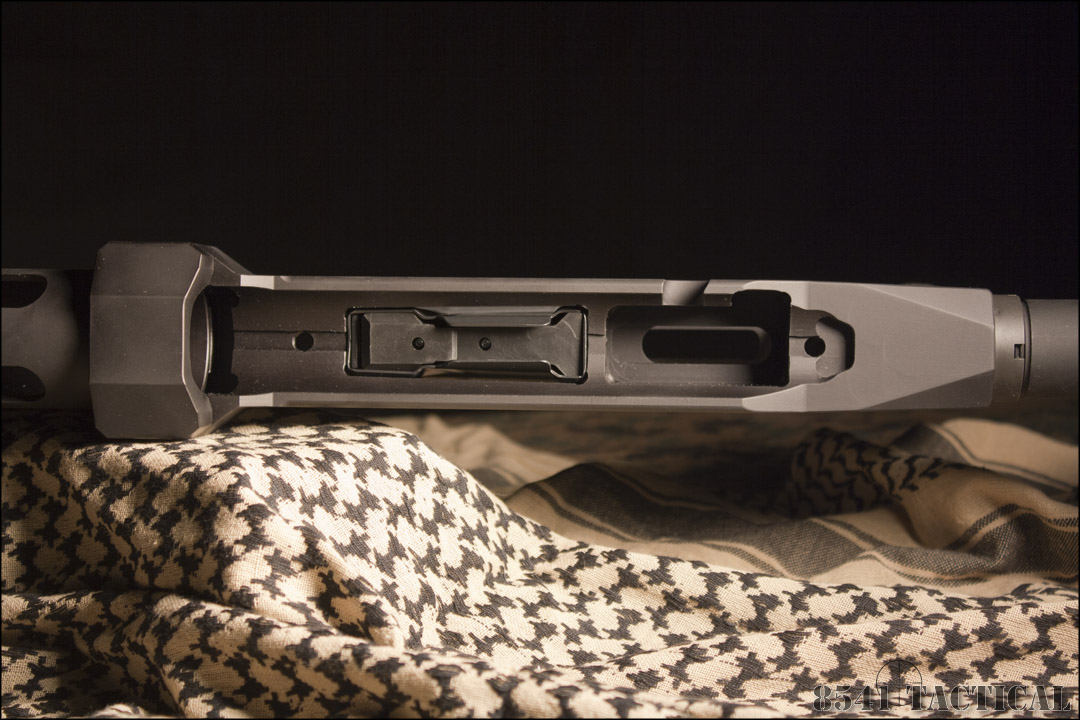
|
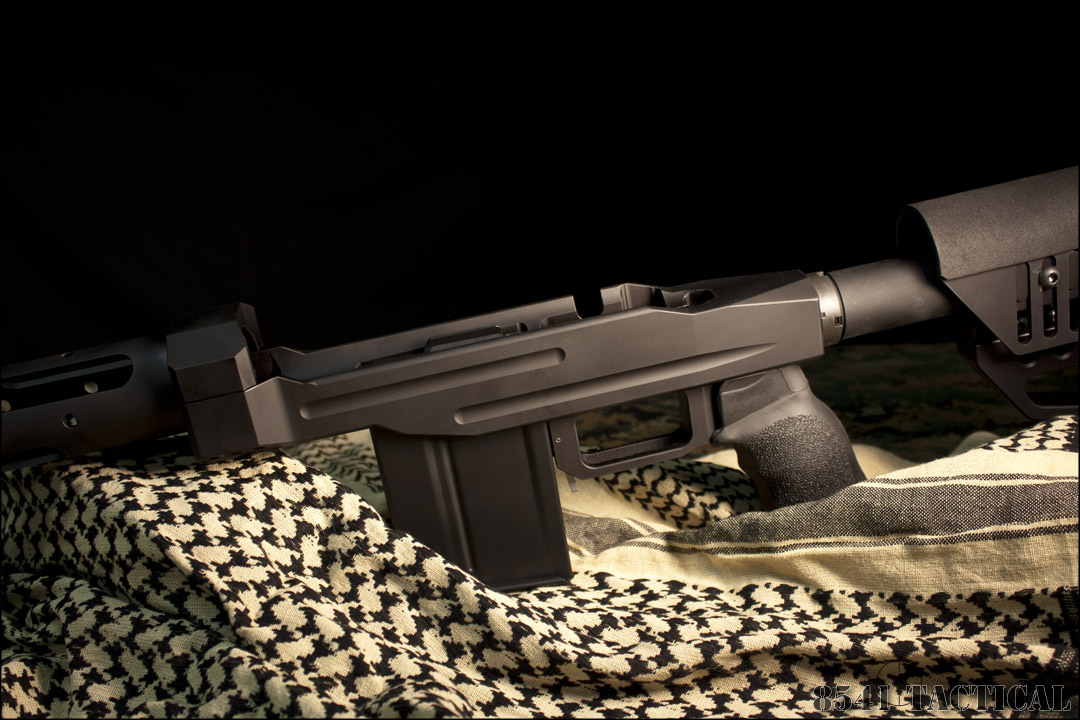 |
Looking at the sides of the action block you can see the detail put into the chassis. There are lightening grooves in the side. The contours are cut in a vague resemblance to a stealth fighter. It looks edgy, but your hands would be hard pressed to find a sharp edge.
The Evolution Chassis will accept a standard AR15 pistol grip. Grips with the "duck tail" on the back will need to be modified. Our chassis came from XLR with an Ergo Overmolded Grip. It has a pebbled finish over large palm swells. I have medium to large sized hands and this grip felt so good that after shooting the Evolution, I bought this grip for my AR10. |
The Evolution Chassis provides an ample trigger guard. I had no problem with fitting my gloved finger in the guard.
The magazine release is a lever type. It is placed at the front of the trigger guard. It is long enough to access easily, but does not seem so long as to get hung up on items.
The Evolution Chassis comes equipped with one ten round Accuracy International AICS magazine. This magazine is the best choice for the Evolution. It does not project below the pistol grip. However it does project low enough to protect the magazine release lever.
When using a ten round magazine it is fairly simple to trip the release and remove the magazine with one hand. The five round AICS magazines will come even with the bottom of the trigger guard. This makes smooth extraction slightly more difficult. |
 |
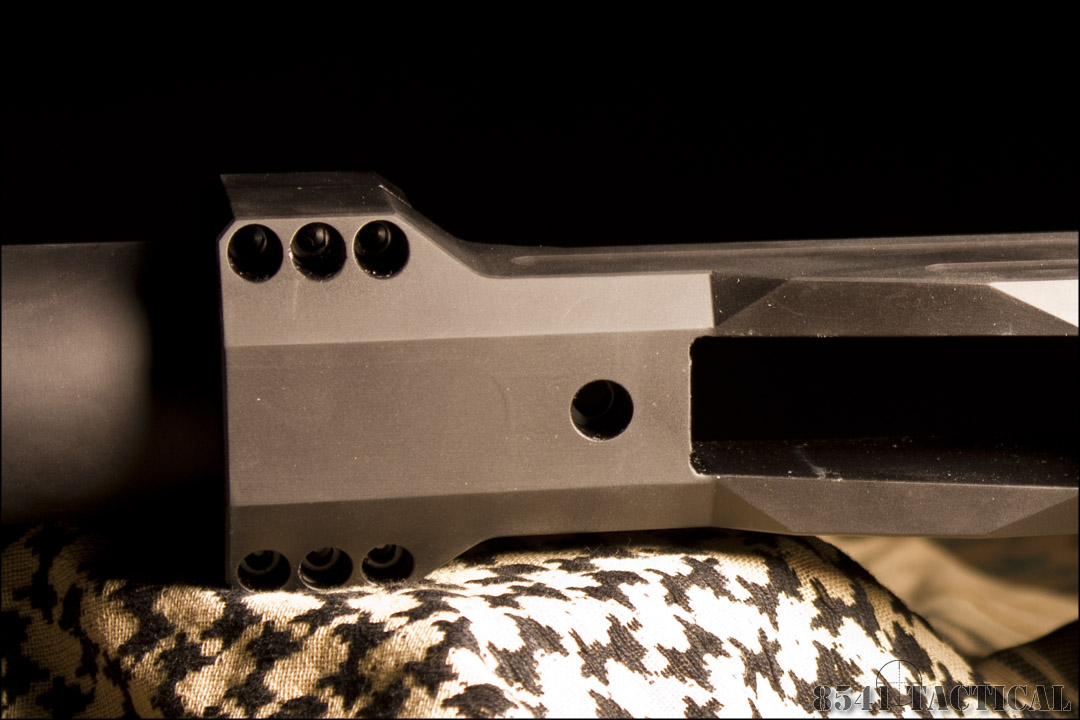 |
The design feature of the Evolution Chassis that seems to be most misunderstood is the forend clamp. The purpose of the clamp is simply to keep the forend tube attached to the action block. It does not touch the barrel or action.
The clamp seems to work exceptionally well. There was no hint of movement during our evaluation. The only issue is that the design of the clamp system prevents the removal of the tube without loosening the action from the block. |
One of the greatest benefits of the forend tube on the Evolution Chassis is the ability to mount accessories only where you want.
The Evolution Chassis has holes along the forend in the twelve, three, six and nine o'clock positions. XLR offers various rails to mount in these holes. The handguard is relieved for ventilation and to reduce weight.
XLR sent along a rail for us to mount a PVS-22 night vision device ahead of our day sight. Side rails can be used for weapon lights, visible and IR lasers or just about anything else you can think of.
The Chassis comes with a standard sling stud at the 6 o'clock position. This works well for mounting a Harris type bipod. No additional mounting hardware is required for the BRM-S to fit well. |
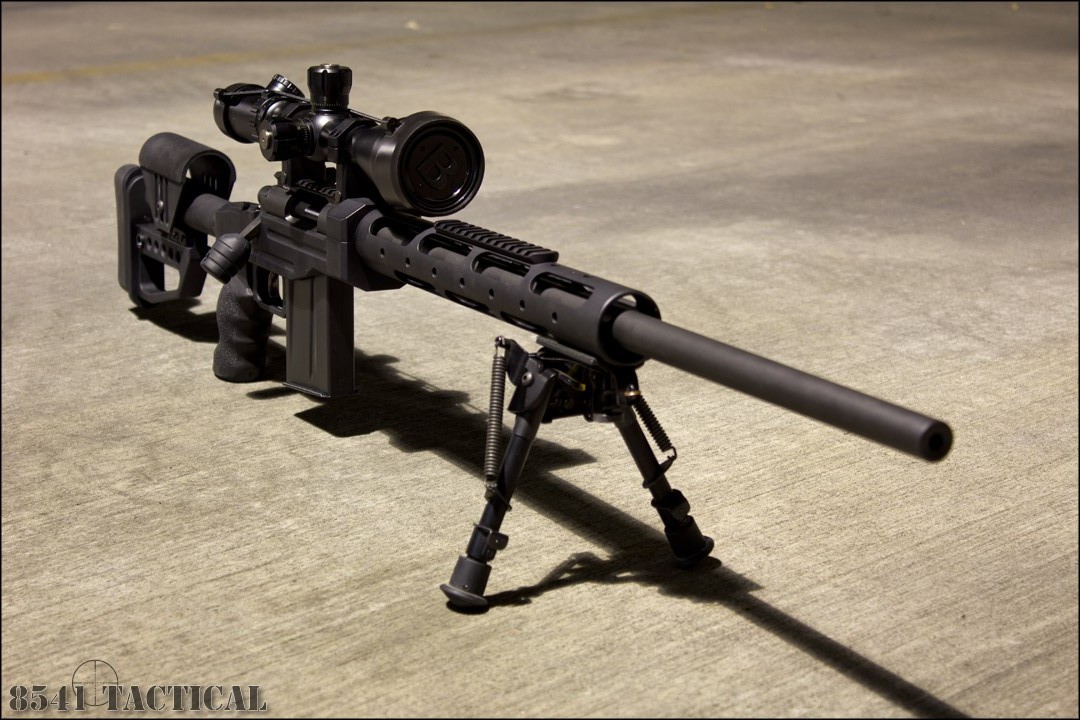 |

